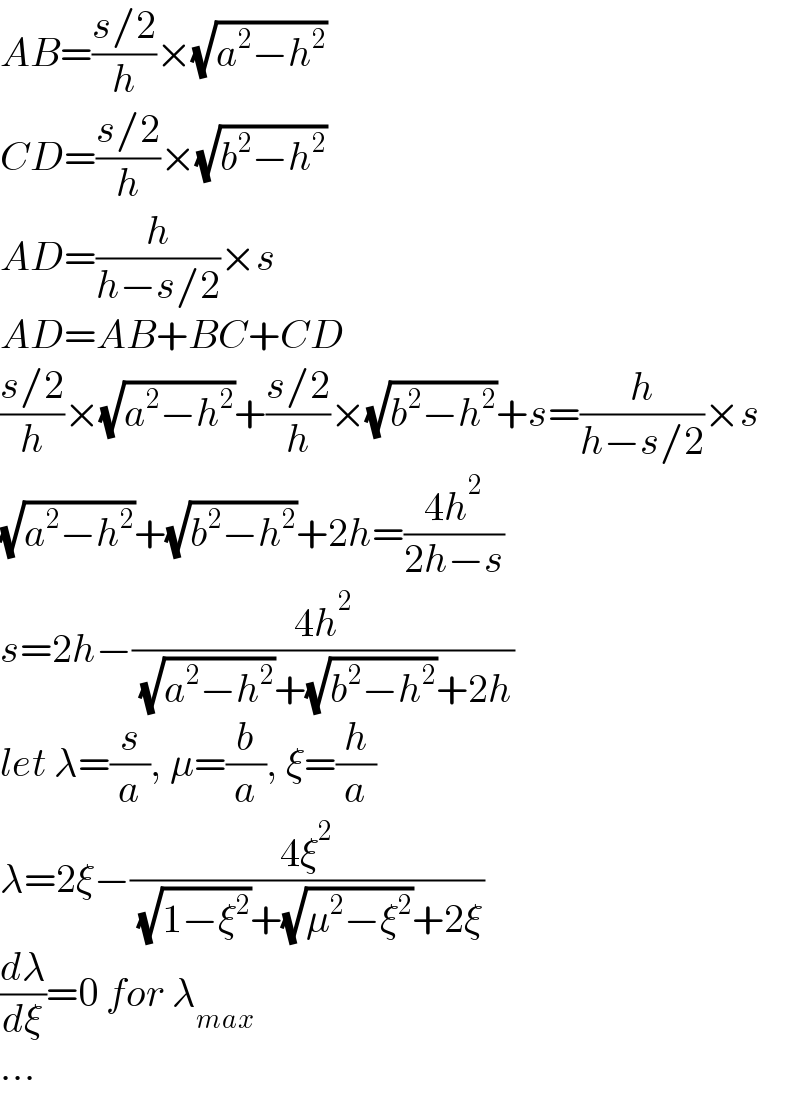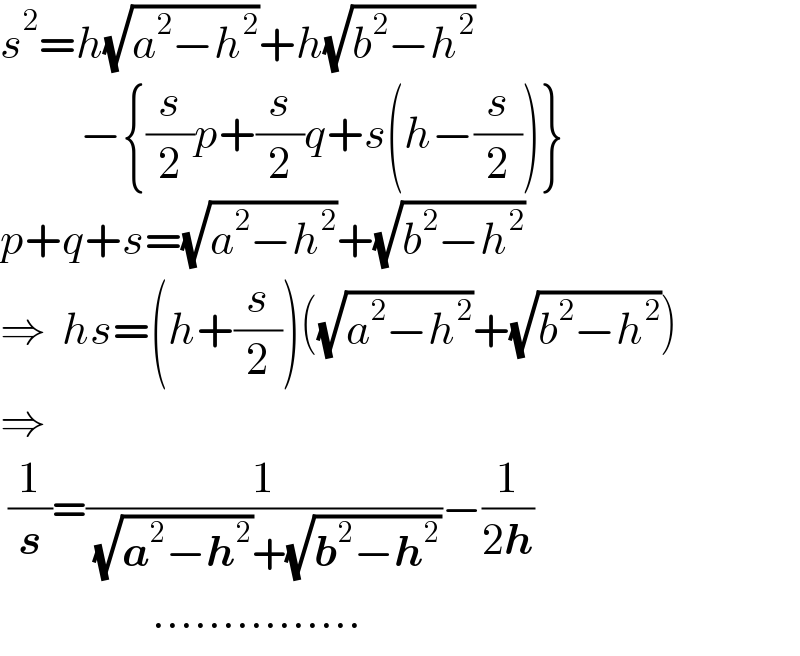
Question and Answers Forum
Question Number 158622 by ajfour last updated on 06/Nov/21

Commented by ajfour last updated on 06/Nov/21

Answered by mr W last updated on 07/Nov/21

Commented by mr W last updated on 07/Nov/21

Commented by mr W last updated on 07/Nov/21

Commented by ajfour last updated on 07/Nov/21

Commented by ajfour last updated on 07/Nov/21

Commented by Tawa11 last updated on 07/Nov/21

